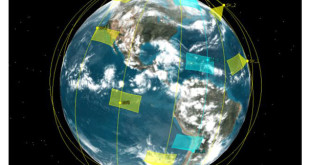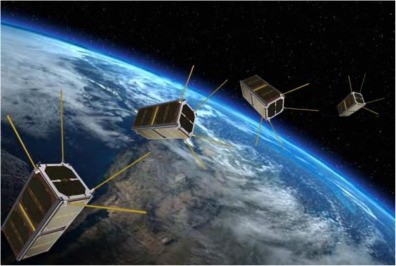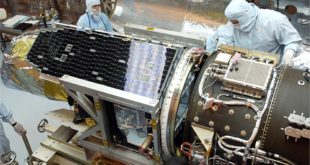Satellites are essential for modern life. They provide us with communication, navigation, weather forecasting, and much more. But satellites need to be able to maneuver in space, and that requires propulsion. Traditionally, satellite propulsion has been based on chemical rockets. These rockets are powerful, but they are also expensive …
Read More »Advancing Lunar Infrastructure: DARPA’s LunA-10 Program
Background and Vision In the year 2035, the Moon is more than just a celestial neighbor—it’s a bustling hub of economic activity. How did we reach this point? DARPA envisions a future where NASA, international partners, and commercial enterprises work hand in hand to accelerate lunar exploration and commerce. The …
Read More »DARPA’s Blackjack: Autonomous LEO Satellite Constellation Merging Commercial and Military Microsatellites for Enhanced Space Security
Historically, Department of Defense (DoD) satellites have been custom-designed for specific missions, resulting in lengthy design and enhancement cycles and high costs per spacecraft. However, the renaissance of commercial space has introduced the potential for economies of scale through the design and manufacturing of numerous low Earth orbit (LEO) constellations. …
Read More »Nuclear Propulsion: The Key to Deep Space Exploration
Introduction In the quest to explore the far reaches of our universe, space agencies and organizations worldwide are pushing the boundaries of propulsion technology. As humanity’s thirst for exploring the cosmos grows, so does the need for advanced propulsion systems that can carry us beyond Earth’s orbit. Traditional rocket propulsion …
Read More »Exploring Satellite Types and Their Orbits: A Journey Through Orbital Mechanics
Satellites play a crucial role in modern life, providing essential services such as communication, weather forecasting, navigation, and scientific observation. These advanced pieces of technology orbit Earth in various ways, each tailored to specific missions. Understanding the different types of satellites and their orbits, along with the principles of orbital …
Read More »Revolutionizing Space Security: AI-Enabled Satellite Swarms
As our reliance on satellite technology continues to grow, ensuring the security of these vital space assets has become increasingly crucial. Traditional space-based systems, often characterized by single, large satellites, are giving way to more advanced and flexible configurations. One groundbreaking advancement is the integration of artificial intelligence (AI) with …
Read More »Satellite Swarms and Formation Flying: Revolutionizing Space Missions
The increasing capabilities of Micro, Nano, and CubeSats, coupled with their short development times and reduced launch costs, are revolutionizing Earth observation missions. These small satellite missions are increasingly favored over traditional large satellites, offering flexibility and cost-effectiveness. Two primary topologies are Satellite Constellations and Satellite Formation Flying. In the …
Read More »High-Volume Satellite Production: Transforming Space with Microsatellite and Nanosatellite Constellations
The rapid evolution of satellite technology is ushering in a new era of space exploration and communication. Driven by substantial commercial and military interest, the focus has shifted towards high-volume production of microsatellites and nanosatellites. These small, agile satellites are not only cost-effective but also offer remarkable versatility for a …
Read More »Riding the Signal Wave: Advanced Modulation for Next-Gen LEO Satellite Constellations
In the realm of modern connectivity, few technologies rival the reach and flexibility of satellite communications. Unlike terrestrial networks, which are often constrained by geographical limitations, satellite systems have the unique ability to cover the entire globe, bringing connectivity to even the most remote and underserved regions. Moreover, with the …
Read More »Multiple Access and Routing for LEO Satellite Constellations: Unlocking Efficient Communication
The advent of Low Earth Orbit (LEO) satellite constellations has revolutionized the satellite communication landscape, offering unprecedented global coverage, low latency, and high-speed data transfer. Central to the success of these constellations are the sophisticated techniques of multiple access and routing. This article delves into the intricacies of these mechanisms …
Read More » International Defense Security & Technology Your trusted Source for News, Research and Analysis
International Defense Security & Technology Your trusted Source for News, Research and Analysis



